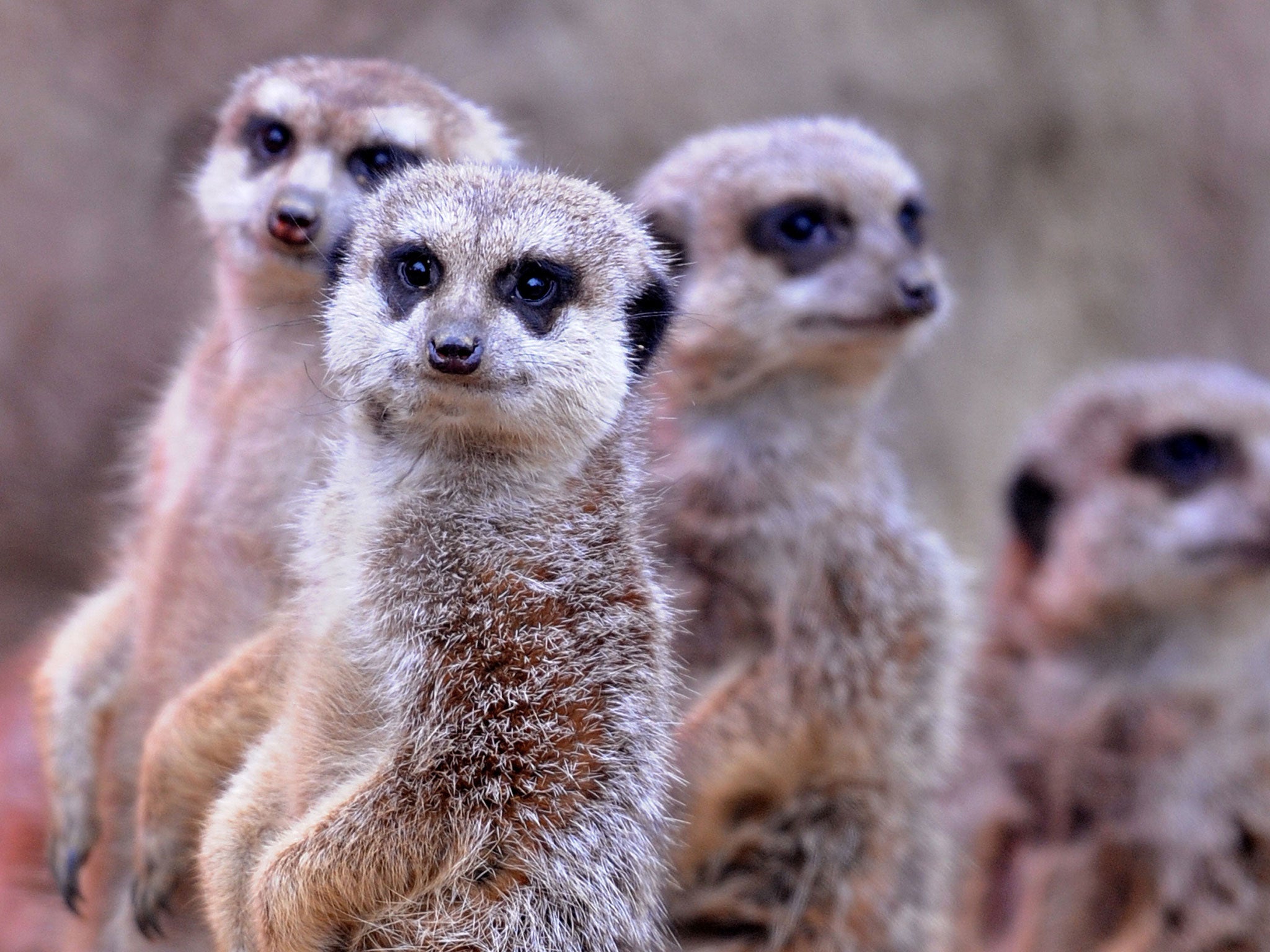The Independent's journalism is supported by our readers. When you purchase through links on our site, we may earn commission.
Meerkats revealed as most murderous mammal known to science
'It is surprising that animals like meerkats, marmots and ground squirrels have high levels of mortality' caused by their own species, scientist says

Your support helps us to tell the story
From reproductive rights to climate change to Big Tech, The Independent is on the ground when the story is developing. Whether it's investigating the financials of Elon Musk's pro-Trump PAC or producing our latest documentary, 'The A Word', which shines a light on the American women fighting for reproductive rights, we know how important it is to parse out the facts from the messaging.
At such a critical moment in US history, we need reporters on the ground. Your donation allows us to keep sending journalists to speak to both sides of the story.
The Independent is trusted by Americans across the entire political spectrum. And unlike many other quality news outlets, we choose not to lock Americans out of our reporting and analysis with paywalls. We believe quality journalism should be available to everyone, paid for by those who can afford it.
Your support makes all the difference.The meerkat – the beloved hero of an advert for car insurance – has been unmasked as the most "murderous" mammal known to science.
Researchers compiled a list of more than 1,000 mammals based on how many deaths were caused by members of the same species.
The meerkat had the highest rate with 19.4 per cent of all deaths the result of an attack by another meerkat, the academics reported in the journal Nature.
The carnivore, which lives in mobs of up to 50 mostly in the Kalahari and Namib deserts in southern Africa, is known for infanticide in particular.
It was closely followed by Schmidt's guenon, a type of monkey, (18.2 per cent) and the red-fronted lemur (16.7 per cent). Some of their close relations also had similarly high figures.
Others in the top 10 include the New Zealand sea lion (15.3 per cent), long-tailed marmot (14.5 per cent), lion (13.3 per cent), banded mongoose (13 per cent), grey wolf (12.8 per cent) and Chacma baboon (12.3 per cent) with the diademed sifaka and long-tailed chinchilla tied in 10th place on 12 per cent.
There were a number of unexpected findings. For example, the Dama gazelle is responsible for 11.8 per cent and the California ground squirrel accounts for 11.9 per cent of the respective species’ deaths – more than the jaguar (11.1 per cent) or cougar (11.7 per cent).
The lead author of the paper, Dr José María Gómez, of Granada University in Spain, told The Independent in an email: "It is surprising that a priori cute and pacific animals, like meerkats, marmots and ground squirrels, have high levels of mortality to conspecifics [members of the same species]."
The research was done to help scientists estimate the rate of intentional killing among humans when Homo sapiens first evolved and they put this at about two per cent. That was more than six times higher than the average among the 1,024 mammal species of just 0.3 per cent.
“Many primates exhibit high levels of intergroup aggression and infanticide,” the researchers wrote in Nature.
“Social carnivores sometimes kill members of other groups and commit infanticide when supplanting older members of the same group. Even seemingly peaceful mammals such as hamsters and horses sometimes kill individuals of their own species.”
Primates seemed to have a greater tendency towards violence, something that was associated with living in social groups and maintaining a territory. Chimpanzees cause nearly 4.5 per cent of deaths of other chimps, while eastern gorillas account for five per cent of their species.
But other primates are extremely peaceful. The figure for the famously pacific bonobo was just 0.7 per cent but the western gorilla was even less likely to resort to deadly violence with a rate of just 0.14 per cent.
Indian rhinocerous (1.01 per cent), tigers (0.88 per cent), the African forest elephant (0.29 per cent) and vampire bats (0.1 per cent) also had low rates, at least relative to early humans.
Some animals did kill each other at all. Among more than 10,000 deaths of zebras, there was not a single example of a same-species killing.
Thomson’s gazelle (zero out of 410,000 deaths), the margay, a cat native to South and Central America (zero out of 1000,000) and multiple species of bats (zero out of hundreds of thousands) also appeared not to kill each other.
Join our commenting forum
Join thought-provoking conversations, follow other Independent readers and see their replies
Comments